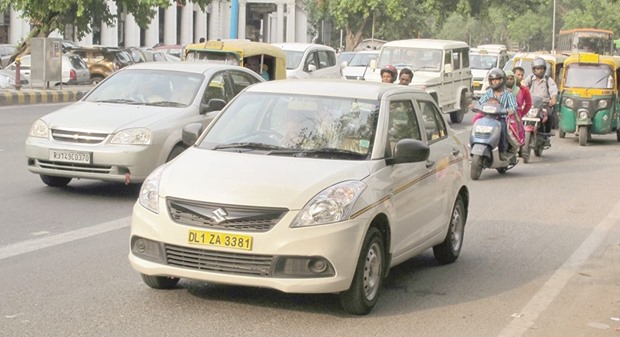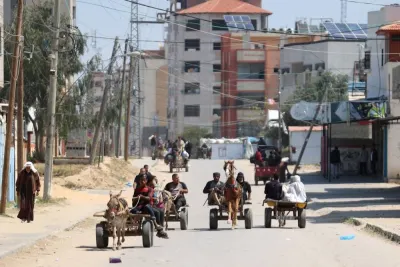The joy of having just installed the Uber app lasts only a few seconds when you order a taxi in Indian capital New Delhi.
The programme is quick to find a free taxi and both driver and passenger can see where the each other are. And yet the phone rings immediately.
“Where should I go?” the driver asks in broken English.
The passenger repeats time and again the initials “GPS,” in the hope that the driver will simply follow the navigation system that is built into the app.
At some point, the driver just hangs up, without making it clear whether he will show up or not.
Ordering an Uber taxi in India is a gamble. Many drivers are very cautious. They know their way around and they brilliantly handle the chaotic traffic in India’s big cities.
However, often enough it is also the case that they are overwhelmed and can’t even manage to find their passengers.
Quality fluctuations are linked to Uber’s business model. The company owns no taxis: its app only connects passengers with independent drivers.
Passengers can rate drivers’ services with a star system, but drivers are not Uber employees, and the company just takes a cut of the price passengers pay for their ride.
Investors are so convinced about this system that Uber has been able to raise about 11 billion dollars. India is a key market for the company, which wants to invest more than 1 billion dollars there by the end of 2016.
Among other reasons, India is so important for Uber because the firm cannot get a proper hold in many developed markets.
In Germany, for example, the courts have banned individuals without a taxi licence from being posted as drivers in the app, so that Uber can only act as a mediator with regular taxis and can therefore not offer any particular flexibility or price advantages.
India, a country of almost 1.3 billion people, offers great growth prospects. Uber has only been active there for three years, and it already has more than 250,000 drivers and operates in almost 30 cities, according to company figures.
The Indian government also demands that Uber use only licensed taxi drivers, but the registration process is considerably simpler and cheaper there than it is in many European countries, for example.
However, quite a different problem has emerged for Uber in India. Its usual strategy of forcing its way into new markets with as much money as possible appears not to be paying off in the Asian nation: a local competitor is not only standing up to the US giant but has even become the market leader.
Although Indian firm Ola could not keep up financially for a long time, it is now serving almost four times as many cities as Uber, according to Ola’s own figures. In terms of registered drivers, it also leads its US competitor by more than 100,000.
Last year, Ola made its big financial breakthrough, when it raised about 880 million dollars from investors over several fundraising rounds. According to media reports, the company is expected to raise at least that much again this year.
Ola has two major advantages with relation to Uber. It can concentrate its whole capital in just one country, and it is a local player.
Further, it offers a much larger scope of vehicle types than Uber, from large limousines to three-wheeled auto rickshaws.
Ola also leads Uber in terms of payment methods. Credit card payment cannot be taken for granted in India, and while Ola offered the option of paying drivers in cash from the start, Uber only allowed that a few months ago.
At the moment, it is mostly passengers who are benefiting from the packed war chests of both rivals. In some Indian cities, a 1-kilometre ride in either an Uber car or an Ola taxi costs less than 11 cents of a dollar.
In compensation, the two companies pay their drivers generous bonuses. There are no official figures, but drivers speak of bonus payments of more than 100 dollars per day when they secure enough rides.
“It’s not a question of who is making profits right now, because no one is,” start-up expert Kulpreet Kaur writes in a blog post. “The question is who can bleed the longest.” —DPA

In New Delhi taxis need a valid license on their yellow license plates. The taxi aggregators Uber and Ola are currently introducing expensive competition in India.


